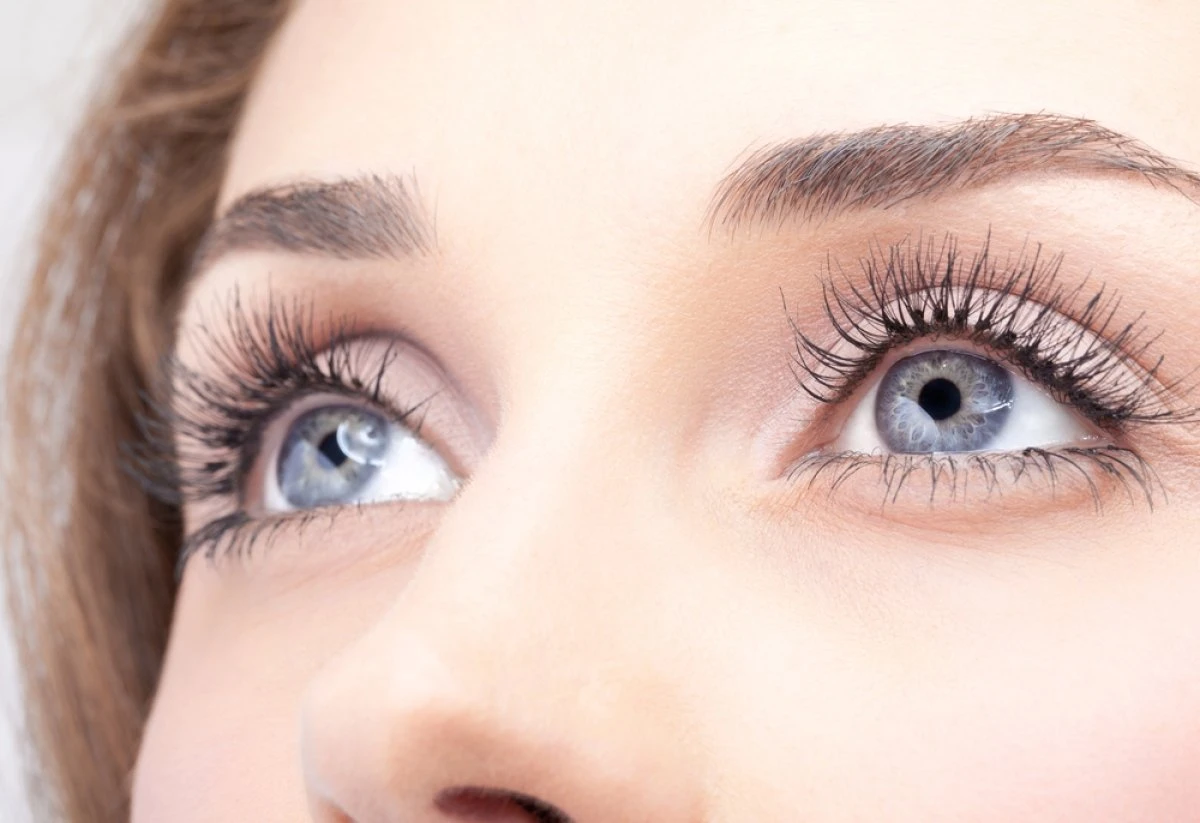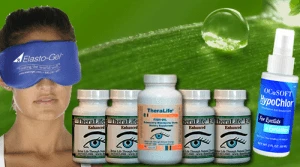Theralife’s products uniquely benefit customers by offering comprehensive oral eye treatment care, a service exclusive to the company. These products are specially designed to address issues such as dry eyes and mouth associated with Sjögren’s syndrome, providing relief through a holistic approach. Theralife combines traditional herbal therapies with modern science to enhance symptom management, supporting tear and saliva production while reducing inflammation and fatigue. Their innovative solutions not only improve quality of life but also provide effective symptom relief, setting Theralife apart in the realm of eye and oral care.
In addition to their specialized products, Theralife offers valuable resources for managing conditions like blepharitis, dry eyes, and uveitis. Their website provides guides on living with these conditions, offering tips on diet, makeup use, and natural remedies to promote eye health. Theralife also highlights the importance of an anti-inflammatory diet and mindfulness practices, further supporting their customers’ overall well-being. Through their unique offerings and comprehensive support, Theralife remains the premier provider of oral eye treatment care.
Powerful All Natural Oral Treatment for Sjogren’s Dry Eyes, Joint Pain.
Add To Cart
Key Takeaways
- Local acupuncture near salivary and lacrimal glands may provide mild subjective relief for dry mouth and eyes, though objective improvement is limited.
- Acupuncture targeting immune modulation acupoints can help reduce systemic inflammation and support overall immune balance in Sjögren’s syndrome.
- Specific acupressure and acupuncture points, such as ST36 and SP6, may alleviate fatigue and enhance energy levels naturally.
- Facial acupuncture can help decrease neuropathic discomfort and nerve pain in patients with Sjögren’s-related facial symptoms.
- Combining acupuncture with mindfulness, breathing techniques, and herbal medicine can further improve mood, sleep, and overall quality of life.
Targeting Dry Mouth With Salivary Gland Points
Although acupuncture often claims to stimulate salivary gland function and alleviate dry mouth in Sjögren’s syndrome, current clinical evidence doesn’t support the efficacy of targeting specific salivary gland points for meaningful improvement.
When you explore acupuncture techniques for salivary stimulation, it’s essential to recognize that most well-designed studies haven’t demonstrated significant increases in saliva production or sustained symptomatic relief.
While practitioners may use points associated with the parotid or submandibular glands, research remains inconclusive regarding their clinical benefit for xerostomia in Sjögren’s.
You might experience a subjective sense of well-being or relaxation, but objective measures of salivary flow typically show minimal change.
As a result, it’s vital to approach salivary stimulation claims with a critical, evidence-based mindset and consider integrating supportive therapies validated by clinical research. Additionally, autoimmune diet guidelines suggest avoiding certain foods like red meat and processed items, which can further help manage Sjögren’s symptoms by reducing gut inflammation.
Moisturizing Eyes Using Local Acupuncture Techniques
You can address ocular dryness by targeting acupuncture points known to stimulate tear production and modulate local inflammation. Clinical studies indicate that specific periocular point stimulation may enhance lacrimal gland function and reduce inflammatory cytokine activity. This integrative approach supports both symptom relief and overall ocular surface health in Sjögren’s patients. Consider incorporating Omega-3 Fish Oil as it helps thicken natural tears and prevent evaporation, complementing the effects of acupuncture.
Stimulating Tear Production Points
While clinical interest persists in local acupuncture for eye moisture, current evidence does not validate the effectiveness of stimulating tear production points in Sjögren’s syndrome. You may encounter various tear stimulation techniques and acupuncture point selection methods, but rigorous studies haven’t confirmed their clinical benefit for tear enhancement in Sjögren’s patients. Despite theoretical rationale in Traditional Chinese Medicine, modern research hasn’t substantiated a significant increase in lacrimal secretion following targeted needling. A notable alternative to traditional methods is TheraLife Eye, which targets the root cause of dry eyes through oral capsules to improve tear production. Here’s a quick overview of commonly referenced points and their proposed effects:
| Acupuncture Point | Location | Theoretical Effect |
|---|---|---|
| BL1 | Inner eye corner | Tear stimulation |
| ST1 | Below eye socket | Moisturizing eyes |
| GB20 | Base of skull | Eye discomfort relief |
| LI4 | Hand webbing | Systemic regulation |
| EX-HN5 | Temple region | Local circulation |
Current guidelines recommend evidence-based approaches for ocular dryness in Sjögren’s.
Reducing Ocular Inflammation
Despite the theoretical appeal of local acupuncture techniques for reducing ocular inflammation and moisturizing the eyes in Sjögren’s syndrome, current scientific evidence doesn’t support their efficacy.
You might consider acupuncture for ocular health and inflammation reduction, but rigorous clinical trials haven’t demonstrated significant improvements in tear film stability or symptomatology compared to placebo.
Local needling around the periorbital area is generally safe in skilled hands, yet studies lack robust, reproducible results for ocular inflammation reduction in Sjögren’s patients.
If you’re seeking holistic approaches, it’s important to integrate evidence-based medical therapies, such as artificial tears and anti-inflammatory ophthalmic agents, alongside any complementary techniques.
Ultimately, maintaining ocular health in Sjögren’s syndrome requires collaboration with your healthcare provider and a critical evaluation of both conventional and alternative interventions.
Considering the overlap between Sjögren’s syndrome and rheumatoid arthritis, ocular complications such as dry eyes are common in both conditions, and patients should remain vigilant about their eye health.
Boosting Immune Balance Through Meridian Therapy
You can support immune modulation in Sjögren’s by using meridian therapy to regulate Qi flow and harmonize Yin and Yang. Clinical studies indicate that this approach may help reduce inflammatory responses and restore immune homeostasis. Additionally, incorporating nutrient-dense foods like fresh vegetables, meats, and fermented items from the AIP diet can further aid in managing autoimmune symptoms by promoting gut health and reducing inflammation.
Regulating Qi Flow
Although the concept of regulating Qi flow through meridian therapy remains foundational in traditional Chinese medicine, current scientific evidence doesn’t support its efficacy in modulating immune balance for Sjögren’s syndrome.
Practitioners often suggest that by targeting specific acupuncture points, you can address qi blockages along the energy pathways, theoretically restoring physiological harmony. This approach is believed to enhance systemic resilience and promote symptom relief.
However, objective clinical studies haven’t demonstrated reliable immunomodulatory effects from regulating Qi flow in individuals with Sjögren’s syndrome.
If you’re considering acupuncture as an adjunctive therapy, it’s important to recognize that, while the holistic framework emphasizes the interconnectedness of energy systems, the measurable impact on immune function in Sjögren’s remains unsubstantiated by current biomedical research.
It’s crucial to maintain awareness of the overlapping symptoms between Sjögren’s syndrome and other conditions, which can complicate diagnosis and treatment options.
Always integrate evidence-based strategies into your care plan.
Harmonizing Yin and Yang
Building on the foundational principles of Qi flow regulation, traditional Chinese medicine also emphasizes harmonizing Yin and Yang to support systemic equilibrium.
For individuals with Sjögren’s syndrome, this approach targets the restoration of energy balance, which is often disrupted by autoimmune dysregulation.
Acupuncture points along key meridians—such as the Kidney, Spleen, and Lung channels—are selected to modulate yin yang dynamics and promote homeostasis.
By harmonizing these forces, you may experience improvements in mucosal moisture, immune stability, and overall vitality.
Clinical studies suggest that meridian therapy can help recalibrate the body’s regulatory networks, supporting both immune resilience and symptomatic relief.
This evidence-based method addresses the underlying energetic imbalances that contribute to Sjögren’s, offering a holistic adjunct to conventional care.
The debilitating effects of Sjögren’s syndrome, such as extreme fatigue and muscle soreness, can be alleviated through these holistic treatments, enhancing quality of life.
Reducing Inflammatory Responses
While autoimmune dysregulation in Sjögren’s syndrome often leads to persistent inflammation, meridian therapy in acupuncture aims to modulate the body’s immune response by targeting specific acupoints associated with immune regulation.
By employing acupuncture techniques such as needling points along the Large Intestine, Spleen, and Stomach meridians, you can effectively influence cytokine expression and decrease the inflammatory response.
Clinical studies suggest that acupuncture fosters immune homeostasis by reducing pro-inflammatory mediators and enhancing anti-inflammatory pathways.
This holistic approach not only supports symptom management but also addresses the root imbalance underlying chronic inflammation.
Incorporating therapies like immune modulation, which is key in managing Sjögren’s syndrome, can enhance the efficacy of acupuncture by reducing inflammation and targeting the root causes of symptoms.
When you incorporate acupuncture into your Sjögren’s relief regimen, you’re utilizing an evidence-based, integrative strategy that helps restore immune balance and improve your overall quality of life.
Enhancing Energy and Reducing Fatigue Naturally
Since individuals with Sjögren’s syndrome frequently experience persistent fatigue and diminished energy, integrating acupuncture with holistic lifestyle modifications aims to enhance liveliness.
Evidence-based acupuncture protocols target specific meridians associated with energy techniques and fatigue management. By stimulating acupoints such as ST36 (Zusanli) and SP6 (Sanyinjiao), you may support mitochondrial function and improve qi flow, which research links to reduced fatigue severity. Dry eyes are a common symptom associated with rheumatoid arthritis, another autoimmune disorder that can benefit from holistic treatments like acupuncture.
Complementary strategies, including nutrition enhancement and mind-body practices, further reinforce your energy reserves. Clinical studies suggest that regular acupuncture sessions can modulate neuroendocrine pathways, contributing to sustained improvements in alertness and stamina.
Consider the following holistic practices alongside acupuncture for enhanced outcomes:
- Adopt individualized energy techniques tailored to your needs.
- Engage in gentle movement therapies like tai chi.
- Prioritize restorative sleep hygiene and stress reduction routines.
Relieving Joint Pain and Stiffness With Acupressure
Alongside improvements in energy and fatigue, many individuals with Sjögren’s syndrome contend with chronic joint pain and stiffness that can impede daily functioning.
Acupressure techniques offer a non-pharmacological approach to manage these musculoskeletal symptoms. By targeting specific acupoints—such as LI4 (Hegu), LI11 (Quchi), and ST36 (Zusanli)—you can stimulate circulation, reduce inflammation, and promote joint flexibility.
Evidence suggests that consistent application of acupressure may alleviate pain intensity and enhance range of motion in affected joints. Integrating these techniques into your daily routine supports both symptomatic relief and overall well-being, complementing standard medical therapies.
When performed properly, acupressure is safe, holistic, and empowers you to actively participate in your symptom management, supporting improved mobility and quality of life despite Sjögren’s challenges.
Incorporating anti-inflammatory foods into your diet can also aid in reducing inflammation, providing a holistic approach to managing symptoms of Sjögren’s syndrome.
Calming Nerve Discomfort in Facial Regions
Although Sjögren’s syndrome primarily affects moisture-producing glands, it often leads to neuropathic discomfort across facial regions, including sensations of burning, tingling, or numbness.
You may find that facial acupuncture provides targeted nerve soothing by stimulating specific acupoints associated with cranial and trigeminal nerve pathways. Evidence suggests this modality can promote neuromodulation, reduce inflammation, and help restore microcirculation, thereby alleviating facial nerve discomfort.
Practitioners select acupoints based on your unique symptom distribution, aiming for both immediate and cumulative relief. With regular sessions, you might notice reduced intensity and frequency of neuropathic symptoms.
To optimize nerve soothing outcomes with facial acupuncture, consider:
- Consistent weekly treatments for cumulative benefits
- Integrative use alongside prescribed medications
- Mindfulness practices to address stress-induced nerve sensitivity
This holistic, evidence-guided approach offers tangible relief for facial discomfort.
Supporting Digestive Health for Better Absorption
You can support nutrient absorption by targeting gut motility and strengthening spleen function through acupuncture.
Clinical studies indicate that optimizing these digestive mechanisms may alleviate common gastrointestinal symptoms in Sjögren’s syndrome.
Enhancing Gut Motility
While digestive symptoms frequently accompany Sjögren’s syndrome, current research doesn’t support acupuncture as a proven method for enhancing gut motility or improving nutrient absorption.
As you navigate Sjögren’s challenges, it’s important to acknowledge that, despite acupuncture’s historical use, robust clinical evidence for its efficacy in optimizing gut health and digestive balance remains insufficient.
Still, many patients pursue integrative approaches to support their digestive tract. To foster digestive health, consider the following:
- Consult with your healthcare provider before beginning any complementary therapies
- Focus on evidence-based dietary modifications that promote gut health
- Monitor digestive symptoms to track the effects of any interventions
Adopting a holistic, evidence-based perspective guarantees you prioritize safety and clinical efficacy.
Stay informed about emerging research to make the best decisions for your digestive well-being.
Strengthening Spleen Function
Despite the prominence of “spleen” function in Traditional Chinese Medicine (TCM) as a foundation for digestive health and nutrient absorption, clinical evidence doesn’t substantiate acupuncture as an effective method for strengthening spleen function or enhancing absorption in individuals with Sjögren’s syndrome.
While TCM views balanced spleen qi as critical to digestive harmony and overall well-being, scientific studies haven’t confirmed that acupuncture can directly modulate these physiological processes in the context of Sjögren’s.
You might encounter claims that acupuncture supports spleen qi and improves digestive function, yet these remain unproven in peer-reviewed clinical trials.
For those with Sjögren’s, it’s essential to prioritize evidence-based approaches for managing digestive challenges and consult with healthcare professionals regarding any complementary therapies considered for supporting digestive health and nutrient absorption.
Promoting Relaxation and Stress Reduction
Although chronic stress can exacerbate symptoms of Sjögren’s syndrome, acupuncture aims to modulate the body’s stress response through targeted stimulation of specific acupoints.
This intervention activates the parasympathetic nervous system, encouraging physiological relaxation and reducing cortisol levels. As you undergo acupuncture, you may notice an increased sense of calm and emotional balance.
Integrating mindfulness techniques and controlled breathing exercises during sessions can further potentiate stress-reducing effects, promoting holistic well-being.
Clinical studies support acupuncture’s efficacy in lowering anxiety and improving mood in autoimmune conditions, making it a valuable adjunct for Sjögren’s management.
You can enhance relaxation and stress reduction by:
- Practicing mindfulness techniques during and after acupuncture sessions
- Incorporating deep, rhythmic breathing exercises
- Scheduling regular acupuncture appointments for cumulative benefits
Improving Sleep Quality for Sjögren’s Patients
Many individuals with Sjögren’s syndrome experience disrupted sleep patterns due to symptoms like dry mouth, joint discomfort, and nocturnal pain. You may notice difficulty falling or staying asleep, which can exacerbate fatigue and impair daily function.
Evidence suggests that integrating sleep hygiene strategies—such as maintaining a consistent bedtime, optimizing your sleep environment, and minimizing screen exposure before bed—can improve sleep onset and quality.
Acupuncture, when used alongside relaxation techniques like guided breathing or progressive muscle relaxation, may further support restorative sleep by modulating autonomic nervous system activity and alleviating physical discomfort.
Clinical studies indicate that this holistic approach can decrease sleep latency and nighttime awakenings in autoimmune conditions.
Prioritizing both acupuncture and proven sleep hygiene practices can enhance your overall sleep quality and daytime well-being.
Combining Herbal Medicine With Acupuncture for Synergy
Building on the benefits of acupuncture for symptom management in Sjögren’s syndrome, some patients consider combining acupuncture with herbal medicine to achieve a synergistic effect.
When you integrate herbal synergy with targeted acupuncture techniques, you may enhance modulation of immune responses and support glandular function. Evidence suggests that certain herbal formulations, when used alongside acupuncture, can further address xerostomia, fatigue, and systemic inflammation characteristic of Sjögren’s.
You might explore this integrative approach to maximize therapeutic outcomes, as both modalities aim to correct underlying imbalances.
Benefits reported include:
- Enhanced relief of dry mouth and eyes
- Reduced systemic inflammation and fatigue
- Improved overall quality of life
Always consult a qualified practitioner to design a regimen that’s safe and tailored to your unique medical needs, ensuring optimal cooperation and safety.
Powerful All Natural Oral Treatment for Sjogren’s Dry Eyes, Joint Pain.
Add To Cart
Frequently Asked Questions
How Often Should Acupuncture Sessions Be Scheduled for Sjögren’S Syndrome?
When considering acupuncture for Sjögren’s syndrome, you’ll want to follow frequency recommendations based on symptom severity and your response to treatment.
Clinically, practitioners often suggest starting with one to two sessions weekly for four to six weeks. Treatment duration can then be adjusted—either tapered or maintained—depending on observed improvements.
Since acupuncture’s effects are cumulative, regular sessions promote ideal outcomes, but individualized plans guarantee a holistic, evidence-based approach that supports your overall well-being.
Are There Any Risks or Side Effects of Acupuncture for Sjögren’S Patients?
You might wonder if acupuncture’s benefits come without risks for Sjögren’s patients.
While many patient testimonials highlight improved comfort, you should know minor side effects—like bruising or lightheadedness—can occur.
Rarely, infection or nerve injury may result if sterile technique isn’t followed.
Evidence-based reviews suggest most adverse events are mild and transient.
Always consult a licensed practitioner to guarantee a holistic, safe approach tailored to your unique autoimmune profile.
Can Acupuncture Replace Conventional Medications for Sjögren’S Syndrome?
You shouldn’t consider acupuncture as a replacement for conventional medications in treating Sjögren’s syndrome.
Evidence-based guidelines recommend that you use alternative therapies like acupuncture as part of a holistic approach, complementing—not substituting—standard pharmacologic treatments.
Clinical data show acupuncture may alleviate certain symptoms, but it doesn’t address the underlying autoimmune pathology.
For ideal management, integrate holistic care with your prescribed medications and always consult your healthcare provider before making any changes.
What Qualifications Should I Look for in an Acupuncturist Treating Sjögren’S?
When selecting an acupuncturist for Sjögren’s, you should verify their credentials, such as NCCAOM certification or state licensure.
Make sure they’ve experience with autoimmune disorders and can explain their evidence-based treatment techniques.
Ask about their approach to holistic care, including symptom management and integrated therapies.
Prioritize practitioners who collaborate with your healthcare team, ensuring safe, thorough care that aligns with current clinical guidelines for Sjögren’s syndrome management.
Is Acupuncture Covered by Insurance for Autoimmune Conditions Like Sjögren’S?
When it comes to insurance coverage, remember that “not all that glitters is gold.”
Many insurance plans may cover acupuncture as part of autoimmune treatments, but specifics vary widely. You’ll need to verify benefits with your provider, as some policies require a diagnosis code, physician referral, or only reimburse for certain conditions.
Combining clinical terminology and a holistic perspective, it’s evidence-based to clarify your insurance’s stance before starting any complementary therapy.
Powerful All Natural Oral Treatment for Sjogren’s Dry Eyes, Joint Pain.
Add To Cart
Conclusion
TheraLife’s innovative products provide a unique approach to managing Sjögren’s Syndrome by offering the only oral eye treatment care available. By focusing on holistic and natural solutions, TheraLife helps its customers achieve relief from dryness and discomfort, commonly associated with Sjögren’s. TheraLife’s comprehensive eye care products not only address eye-related issues but also emphasize overall well-being, incorporating dietary and lifestyle adjustments to enhance the body’s natural functions.
Whether dealing with blepharitis, chalazion, or other eye conditions, TheraLife’s targeted therapies are designed to work from the inside out, promoting moisture, reducing inflammation, and supporting eye health. This dedication to a holistic, compassionate approach empowers individuals to navigate the complexities of Sjögren’s with resilience and hope, offering a respectful nudge toward comfort and balance.





